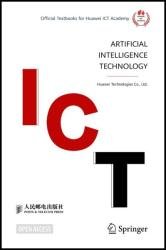Artificial Intelligence Technology
- Добавил: literator
- Дата: 22-10-2022, 19:39
- Комментариев: 0
 Название: Artificial Intelligence Technology
Название: Artificial Intelligence TechnologyАвтор: Huawei Technologies Co., Ltd.
Издательство: Springer
Год: 2023
Страниц: 308
Язык: английский
Формат: pdf (true), epub
Размер: 34.0 MB
This book aims to give our readers a basic outline of today’s research and technology developments on Artificial Intelligence (AI), help them to have a general understanding of this trend, and familiarize them with the current research hotspots, as well as part of the fundamental and common theories and methodologies that are widely accepted in AI research and application. This book is written in comprehensible and plain language, featuring clearly explained theories and concepts and extensive analysis and examples. Some of the traditional findings are skipped in narration on the premise of a relatively comprehensive introduction to the evolution of Artificial Intelligence technology. The book provides a detailed elaboration of the basic concepts of AI, Machine Learning (ML), as well as other relevant topics, including Deep Learning (DL), deep learning framework, Huawei MindSpore AI development framework, Huawei Atlas computing platform, Huawei AI open platform for smart terminals, and Huawei CLOUD Enterprise Intelligence application platform.
Since Artificial Intelligence is a very complicated subject, different people could generate distinctive understanding and simulation of intelligence from different perspectives and viewpoints. Therefore, this book explores AI from diversified perspectives in the eight chapters. Chapter 1 is the general introduction, which introduces the origin, technology, fields of application, and trend of the development of AI, as well as Huawei’s AI development strategy. Chapter 2 focuses on the machine learning, illustrating the types, overall process, and the popular algorithms of machine learning, such as the decision trees, support vector machine, and clustering algorithms commonly in use today. Chapter 3 gives an overview to the deep learning by reviewing its evolvement, and elaborating on its training rules, activation functions, regularization, and optimizers on the basis of neural networks, a widely adopted approach in deep learning. Chapter 4 is about the deep learning frameworks, exemplified by TensorFlow 2.0 as one of the three mainstream frameworks.
Chapter 5 brings up the topic of MindSpore, centering on the AI development framework of Huawei and MindSpore’s development and application. Chapter 6 is about Huawei Atlas AI computing solution, with the discussion revolving around the software and hardware architecture of Ascend AI processor, Atlas AI computing platform, and its industrial applications. Chapter 7 introduces Huawei’s smart terminal AI open platform known as the HUAWEI HiAI platform and the apps developed on it. Chapter 8 looks at the enterprise intelligence application platform Huawei CLOUD by taking Huawei CLOUD EI and ModelArts as major examples. In terms of the narrative style, each chapter has the theories and methods thoroughly expounded, characterized by relatively independent and integral contents. Meanwhile, the chapters are presented in a progressive order to offer asystematic reading experience. Our readers can either read the book chapter by chapter or just jump to certain chapters to have a detailed reading. The chapters are written in concise languages while dealing with profound theories, with part of the derivations of formulas and theorems provided and palpable examples quoted to help beginners to master the basic knowledge, grasp the essence, and put it into practice flexibly.
Contents:
1. A General Introduction to Artificial Intelligence
2. Machine Learning
3. Overview of Deep Learning
4. Deep Learning Frameworks
5. Huawei MindSpore AI Development Framework
6. Huawei Atlas AI Computing Solution
7. HUAWEI AI Open Platform
8. Huawei CLOUD Enterprise Intelligence Application Platform
Скачать Artificial Intelligence Technology
Внимание
Уважаемый посетитель, Вы зашли на сайт как незарегистрированный пользователь.
Мы рекомендуем Вам зарегистрироваться либо войти на сайт под своим именем.
Уважаемый посетитель, Вы зашли на сайт как незарегистрированный пользователь.
Мы рекомендуем Вам зарегистрироваться либо войти на сайт под своим именем.
Информация
Посетители, находящиеся в группе Гости, не могут оставлять комментарии к данной публикации.
Посетители, находящиеся в группе Гости, не могут оставлять комментарии к данной публикации.
